Do you have a question about the Panasonic DMP-BD35 and is the answer not in the manual?
Information on BD-Video region code B playback and labels.
Information on DVD-Video region number "4" or "ALL" playback.
Advice on unit placement for optimum performance and safety.
Caution against using high voltage or DC power sources for the unit.
Guidelines for safe handling and connection of the AC mains lead.
Warnings about metal objects and liquids entering the unit.
Instructions not to repair by yourself and to refer to qualified personnel.
Details on types of retail discs and their industry-standard logos.
Information on different types of discs recorded with other devices.
Instructions for inserting and handling batteries for the remote control.
Guidance on connecting the unit to a television via HDMI or Component.
Guidance on connecting the unit to an amplifier/receiver via HDMI.
Switches the unit between on and standby modes.
Shows unit status like disc reading or SD card activity.
Mechanism for opening and closing the disc tray.
Detects signals from the remote control.
Slot for inserting SD memory cards.
Location and purpose of connection terminals on the back of the unit.
Explains the functions of various buttons on the remote control.
Steps to prepare the television and select the appropriate video input.
How the setup screen appears and initial user interaction.
Procedure for inputting TV brand codes to enable remote control.
Procedure for inputting amplifier/receiver brand codes for remote control.
Steps to test the network connection after setup.
How to configure DNS-IP addresses for network connectivity.
Manual configuration of IP address when DHCP is unavailable.
Adjusting network connection speed for optimal performance.
Steps to enter proxy server address and port number.
How the firmware update availability screen is displayed.
Steps to manually initiate a firmware update from the setup menu.
Instructions to turn on the unit and select video input.
Steps for opening the tray, inserting discs, and closing the tray.
How to select between BD/SD drives for playback.
How to access Top Menu or Direct Navigator.
How to use the special Pop-up menu feature on some discs.
Functionality of stopping playback and resume play.
How to pause and resume playback.
Operations for searching and slow-motion playback.
How to skip to desired titles, chapters, or tracks.
How to begin playback from a specific title or chapter.
How to advance playback frame by frame.
Options to adjust image aspect ratio for full screen display.
How to view status messages about the current playback.
How to select different audio tracks or languages.
Using the Re-master function for enhanced audio quality.
How to play secondary video and audio features on compatible discs.
Using virtual packages with SD cards for interactive features.
Procedures for formatting SD cards or erasing data.
Steps to connect to the internet for BD-Live functionality.
Requirements for enjoying 7.1ch surround sound from high bit rate audio.
Details on audio output formats from HDMI and Digital Audio terminals.
How to output 24 frames per second video for enhanced clarity.
Navigating the Title View screen for chapter selection.
Selecting chapters from the Chapter View screen.
Steps to insert discs or SD cards for playing still pictures.
How to correctly insert an SD card into the slot.
Instructions for safely removing an SD card.
How to exit the current picture display screen.
How to start a slideshow of still pictures.
Playing music from a CD as background during slideshows.
How to navigate and select pictures from different folders.
Adjusting display interval, transition effects, and repeat play.
Rotating still pictures for better viewing.
Zooming out on still pictures for closer inspection.
Instructions for inserting music CDs or MP3 files.
How to select tracks and view playback status.
How to select MP3 tracks from different folders.
Maintaining music playback when the TV is turned off via VIERA Link.
Navigating the FUNCTIONS menu to select media and options.
Details on supported MP3 and JPEG file formats and extensions.
List of media types compatible with MP3 and JPEG files.
Specifications for image resolution for JPEG files.
Information on compression rates for MP3 files.
Details on sampling rates for MP3 files.
Notes on ID3 tags, file naming, and compatibility issues.
Explanation of VIERA Link and its HDAVI Control features.
Features like automatic input switching and power on/off links.
Operating the unit using the TV's remote control buttons.
Accessing unit functions via the TV remote's FUNCTIONS menu.
Using the OPTION menu for control panel and disc menus.
Steps for navigating and changing settings via the on-screen menu.
Overview of adjustable settings for Disc, Soundtrack, Subtitle, etc.
Set a ratings level to limit DVD-Video play.
Set an age limit of BD-Video play.
Choose the language for audio, subtitle and disc menus.
Set subtitle preference for automatic display.
Set menu language preferences.
Restrict Internet access when BD-Live functions are used.
Select picture type shown during pause playback.
Select play mode between playlist chapter segments.
Select PAL60 or NTSC output when playing NTSC discs.
Adjust dynamic range for late night viewing.
Select audio output format (Bitstream or PCM).
Select audio output format for DTS/DTS-HD.
Configure MPEG audio output based on equipment.
Turn on/off secondary audio and menu sounds.
Select how to output audio with a sampling frequency of 96 kHz or more.
Switch downmix system for multi-channel surround sound.
Settings for on-screen messages and screen saver function.
Adjust the brightness of the unit's display.
Match picture aspect ratio to the connected television type.
Settings related to HDMI output and video formats.
Enable HDMI video output from the HDMI AV OUT terminal.
Select supported HDMI video formats based on connected devices.
Enable 24p output for smoother video playback.
Adjust HDMI output range for RGB signals.
Select whether to output audio from HDMI.
Configure VIERA Link function for integrated control.
Set video output resolution for component video terminals.
Match TV system setting to the connected equipment.
Settings for IP address, DNS, connection test, and speed.
Configuration options for proxy server settings.
Settings for remote control, easy setting, default settings, and firmware update.
FAQs related to setting up multi-channel surround sound and connections.
FAQs regarding disc playback compatibility and region codes.
FAQs about SD card operations and compatible card types.
Guide to resolving issues by checking common problems and solutions.
Reasons for reduced SD card capacity and solutions.
Issues with playing MP3/JPEG files from SD cards.
Problems related to reading data from SD cards.
Troubleshooting steps for network connection failures.
Specific issues when connecting while a PC is in use.
Explains AVCHD playback pauses between chapters or scenes.
Reasons why discs may not play, including region codes.
Issues with BD-Video's picture-in-picture feature.
Problems with BD-Video virtual package functions.
Reasons why soundtrack/subtitle selection might fail.
How to enable subtitles if they are not displayed.
Limitations on changing viewing angles during playback.
Conditions where the resume play function may not operate.
Common messages displayed on the TV during operation.
Error codes and messages shown on the unit's display.
Instructions on how to clean discs properly.
Guidelines for handling discs and cards to prevent damage.
How to clean the unit's exterior.
Procedure to reset settings before disposal or transfer.
Details on video signal systems supported by the unit.
Recommended operating temperature range for the unit.
List of disc formats that the unit can play.
Specifications for video output levels and connectors.
Specifications for component video output levels and connectors.
Specifications for audio output levels and connectors.
Performance metrics for audio playback, like frequency response.
Unit's power requirements and consumption details.
Physical dimensions of the unit.
Weight of the unit.
Information on BD-Video region code B playback and labels.
Information on DVD-Video region number "4" or "ALL" playback.
Advice on unit placement for optimum performance and safety.
Caution against using high voltage or DC power sources for the unit.
Guidelines for safe handling and connection of the AC mains lead.
Warnings about metal objects and liquids entering the unit.
Instructions not to repair by yourself and to refer to qualified personnel.
Details on types of retail discs and their industry-standard logos.
Information on different types of discs recorded with other devices.
Instructions for inserting and handling batteries for the remote control.
Guidance on connecting the unit to a television via HDMI or Component.
Guidance on connecting the unit to an amplifier/receiver via HDMI.
Switches the unit between on and standby modes.
Shows unit status like disc reading or SD card activity.
Mechanism for opening and closing the disc tray.
Detects signals from the remote control.
Slot for inserting SD memory cards.
Location and purpose of connection terminals on the back of the unit.
Explains the functions of various buttons on the remote control.
Steps to prepare the television and select the appropriate video input.
How the setup screen appears and initial user interaction.
Procedure for inputting TV brand codes to enable remote control.
Procedure for inputting amplifier/receiver brand codes for remote control.
Steps to test the network connection after setup.
How to configure DNS-IP addresses for network connectivity.
Manual configuration of IP address when DHCP is unavailable.
Adjusting network connection speed for optimal performance.
Steps to enter proxy server address and port number.
How the firmware update availability screen is displayed.
Steps to manually initiate a firmware update from the setup menu.
Instructions to turn on the unit and select video input.
Steps for opening the tray, inserting discs, and closing the tray.
How to select between BD/SD drives for playback.
How to access Top Menu or Direct Navigator.
How to use the special Pop-up menu feature on some discs.
Functionality of stopping playback and resume play.
How to pause and resume playback.
Operations for searching and slow-motion playback.
How to skip to desired titles, chapters, or tracks.
How to begin playback from a specific title or chapter.
How to advance playback frame by frame.
Options to adjust image aspect ratio for full screen display.
How to view status messages about the current playback.
How to select different audio tracks or languages.
Using the Re-master function for enhanced audio quality.
How to play secondary video and audio features on compatible discs.
Using virtual packages with SD cards for interactive features.
Procedures for formatting SD cards or erasing data.
Steps to connect to the internet for BD-Live functionality.
Requirements for enjoying 7.1ch surround sound from high bit rate audio.
Details on audio output formats from HDMI and Digital Audio terminals.
How to output 24 frames per second video for enhanced clarity.
Navigating the Title View screen for chapter selection.
Selecting chapters from the Chapter View screen.
Steps to insert discs or SD cards for playing still pictures.
How to correctly insert an SD card into the slot.
Instructions for safely removing an SD card.
How to exit the current picture display screen.
How to start a slideshow of still pictures.
Playing music from a CD as background during slideshows.
How to navigate and select pictures from different folders.
Adjusting display interval, transition effects, and repeat play.
Rotating still pictures for better viewing.
Zooming out on still pictures for closer inspection.
Instructions for inserting music CDs or MP3 files.
How to select tracks and view playback status.
How to select MP3 tracks from different folders.
Maintaining music playback when the TV is turned off via VIERA Link.
Navigating the FUNCTIONS menu to select media and options.
Details on supported MP3 and JPEG file formats and extensions.
List of media types compatible with MP3 and JPEG files.
Specifications for image resolution for JPEG files.
Information on compression rates for MP3 files.
Details on sampling rates for MP3 files.
Notes on ID3 tags, file naming, and compatibility issues.
Explanation of VIERA Link and its HDAVI Control features.
Features like automatic input switching and power on/off links.
Operating the unit using the TV's remote control buttons.
Accessing unit functions via the TV remote's FUNCTIONS menu.
Using the OPTION menu for control panel and disc menus.
Steps for navigating and changing settings via the on-screen menu.
Overview of adjustable settings for Disc, Soundtrack, Subtitle, etc.
Set a ratings level to limit DVD-Video play.
Set an age limit of BD-Video play.
Choose the language for audio, subtitle and disc menus.
Set subtitle preference for automatic display.
Set menu language preferences.
Restrict Internet access when BD-Live functions are used.
Select picture type shown during pause playback.
Select play mode between playlist chapter segments.
Select PAL60 or NTSC output when playing NTSC discs.
Adjust dynamic range for late night viewing.
Select audio output format (Bitstream or PCM).
Select audio output format for DTS/DTS-HD.
Configure MPEG audio output based on equipment.
Turn on/off secondary audio and menu sounds.
Select how to output audio with a sampling frequency of 96 kHz or more.
Switch downmix system for multi-channel surround sound.
Settings for on-screen messages and screen saver function.
Adjust the brightness of the unit's display.
Match picture aspect ratio to the connected television type.
Settings related to HDMI output and video formats.
Enable HDMI video output from the HDMI AV OUT terminal.
Select supported HDMI video formats based on connected devices.
Enable 24p output for smoother video playback.
Adjust HDMI output range for RGB signals.
Select whether to output audio from HDMI.
Configure VIERA Link function for integrated control.
Set video output resolution for component video terminals.
Match TV system setting to the connected equipment.
Settings for IP address, DNS, connection test, and speed.
Configuration options for proxy server settings.
Settings for remote control, easy setting, default settings, and firmware update.
FAQs related to setting up multi-channel surround sound and connections.
FAQs regarding disc playback compatibility and region codes.
FAQs about SD card operations and compatible card types.
Guide to resolving issues by checking common problems and solutions.
Reasons for reduced SD card capacity and solutions.
Issues with playing MP3/JPEG files from SD cards.
Problems related to reading data from SD cards.
Troubleshooting steps for network connection failures.
Specific issues when connecting while a PC is in use.
Explains AVCHD playback pauses between chapters or scenes.
Reasons why discs may not play, including region codes.
Issues with BD-Video's picture-in-picture feature.
Problems with BD-Video virtual package functions.
Reasons why soundtrack/subtitle selection might fail.
How to enable subtitles if they are not displayed.
Limitations on changing viewing angles during playback.
Conditions where the resume play function may not operate.
Common messages displayed on the TV during operation.
Error codes and messages shown on the unit's display.
Instructions on how to clean discs properly.
Guidelines for handling discs and cards to prevent damage.
How to clean the unit's exterior.
Procedure to reset settings before disposal or transfer.
Details on video signal systems supported by the unit.
Recommended operating temperature range for the unit.
List of disc formats that the unit can play.
Specifications for video output levels and connectors.
Specifications for component video output levels and connectors.
Specifications for audio output levels and connectors.
Performance metrics for audio playback, like frequency response.
Unit's power requirements and consumption details.
Physical dimensions of the unit.
Weight of the unit.
| HDMI | Yes |
|---|---|
| Weight | 4100 g |
| Dimensions (WxDxH) | 430 x 242 x 49 mm |
| Disc types supported | BD, CD, DVD-RAM |
| Component video (YPbPr/YCbCr) out | 1 |
| Audio output channels | 2.0 channels |
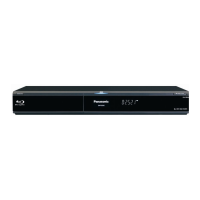
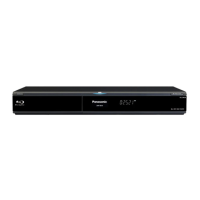
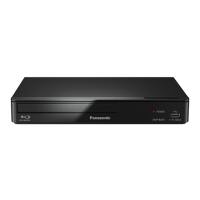
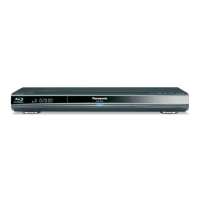
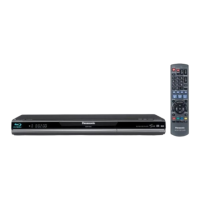

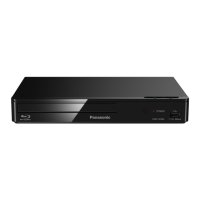

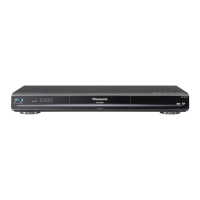
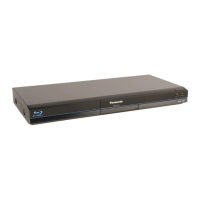
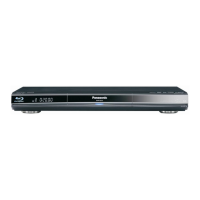
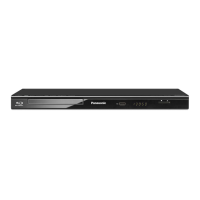
